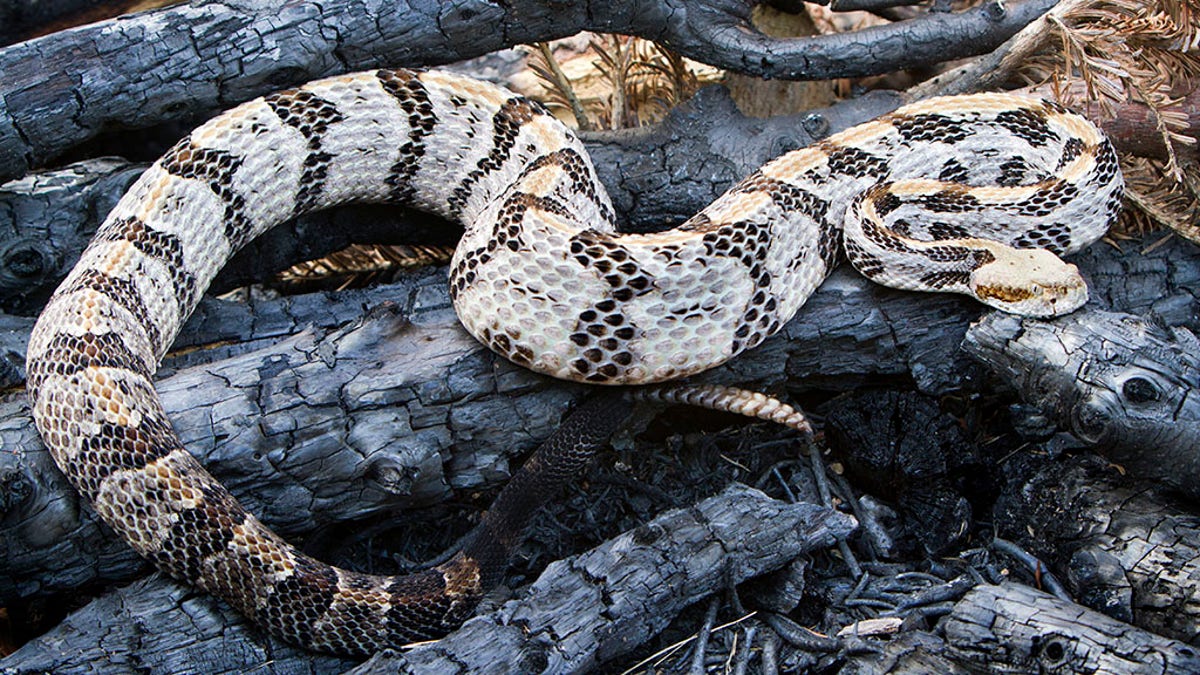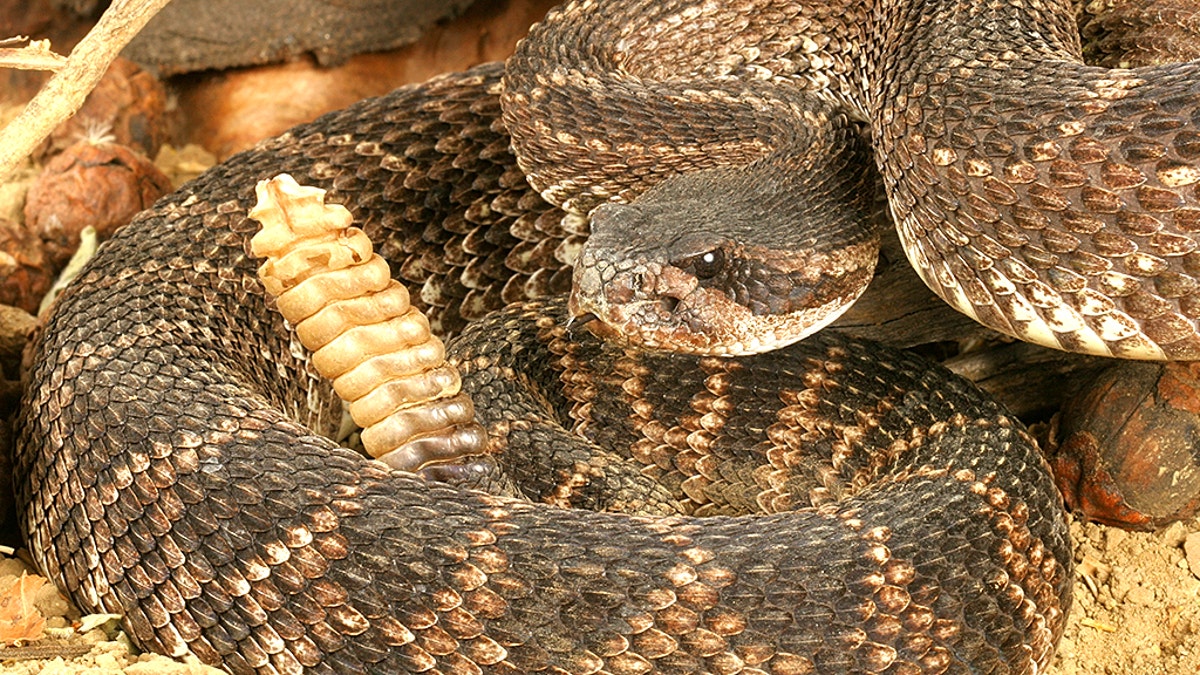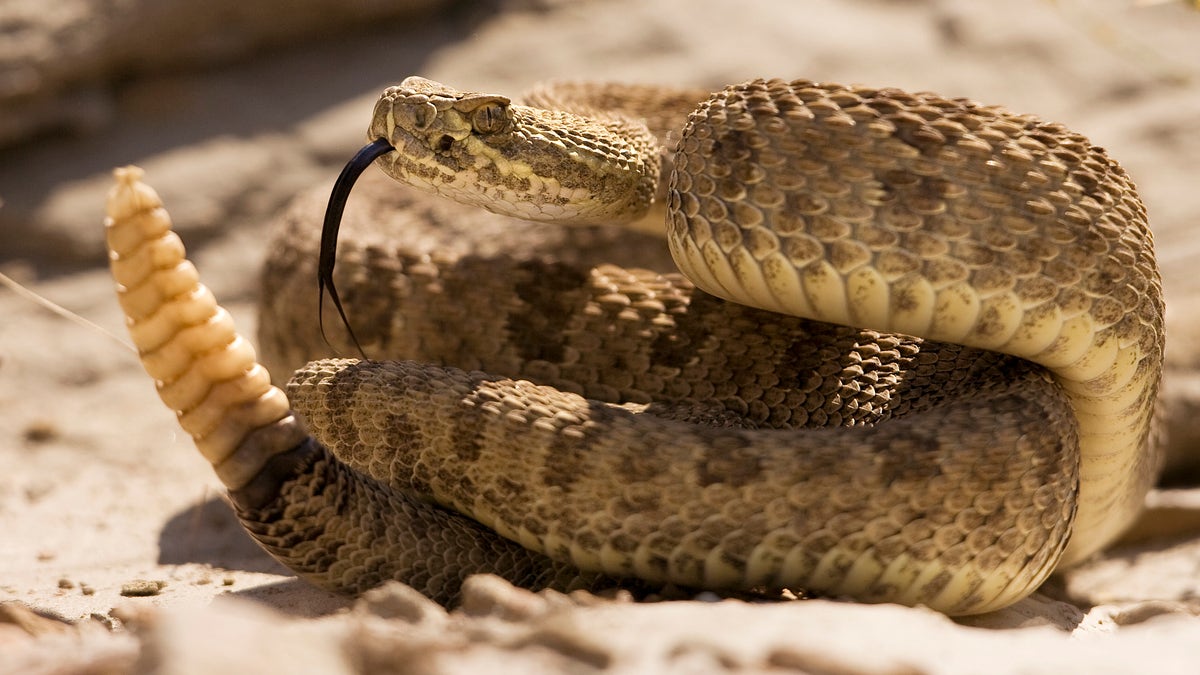Couple out for run stumble upon dozens of snakes
A couple out on a run came across a variety of snakes intertwined in branches piled beneath a trail bridge in Cumming, Georgia, on May 6. Courtesy: Lydia du Preez via Storyful
A respected snake researcher has died after he was bitten by a Timber rattlesnake.
William H. "Marty" Martin died on August 3, one day after he was bitten by a captive Timber rattlesnake on his property in Harper’s Ferry, W.V., said his wife, Renee Martin, according to the Associated Press.
Martin, 80, had been making significant discoveries about snakes for decades, the outlet noted.
TEXAS ALLIGATOR STUNS ON FACEBOOK WITH ITS STEALTHY, SLIPPERY MOVES
John Sealy, a rattlesnake researcher from Stokesdale, N.C., told the AP that Martin was perhaps the foremost authority on Timber rattlers.
He had studied them since boyhood.

Timber rattlesnake is pictured here. These snakes are known to be docile and tend to avoid biting humans, according to experts. (iStock)
Sealy told the AP that Martin was known throughout the snake expert world for his field work and research — and for his ability to find and document a species that is hard to locate.
"They’re extremely secretive animals," Sealy said of snakes.
Martin continued to make arduous mountain hikes to document and count snake populations in remote sites despite his advanced age.
That's according to Joe Villari, who manages the Bull Run Mountains Preserve in northern Virginia, and who shared that with the AP.
IF YOU SEE A SQUIRREL SPRAWLED OUT ON THE GROUND, HERE'S WHAT YOU NEED TO KNOW
Villari would often accompany Martin to remote mountain snake dens several times a year. "He was in his 80s, and he was hard to keep up with," said Villari.
Timber rattlers tend to avoid humans, Villari told the AP, and are known to be docile and often won’t bite even if they’re accidentally stepped on, he said.
Rattlesnakes can be more dangerous if they grow to a size that allows them to inject more venom.
"They save their venom for their prey," he said.
Martin’s passion for snakes was lifelong, the AP noted.
As a boy, he found a population of Timber rattlers in the Bull Run Mountains that was previously unknown — and convinced a herpetologist to come out and verify his find.
Deaths from snakebites are extremely rare; the Centers for Disease Control and Prevention (CDC) estimates they account for about five fatalities annually in the U.S.

A rattlesnake is pictured here. If you encounter a rattlesnake, do not attempt to capture or kill it, a Minnesota state website advises. (iStock)
A second snakebite can be more dangerous than a first for some people, Dan Keyler, a toxicology professor at the University of Minnesota and an expert on snakebites, told the AP.
Rattlesnakes can be more dangerous if they grow to a size that allows them to inject more venom, noted Keyler.
Age can also be a factor in a person’s susceptibility, said Keyler.
Martin had been bitten before but recovered, the AP reported.
VIRGINIA WOMAN DISCOVERS SNAKE INSIDE BAG OF POPCORN AT GROCERY STORE
Anyone who enjoys hiking and camping in the woods has probably asked themselves, "What if I stumble on a snake and it bites me?"
Statistics show there is a greater risk of being bitten when a person attempts to approach and kill a snake, rather than leaving it alone.
The likelihood of being bitten by a rattlesnake is quite small, according to the state of Minnesota’s official website. (Minnesota has a Timber rattler population; they are one of two venous snakes in that state, the website notes.)
"Timber rattlesnakes are generally very docile snakes and typically bite as a last resort," the site noted.

A prairie rattlesnake is pictured here. Death from a rattlesnake bite is rare, Minnesota's state website notes. (REUTERS/Todd Korol)
Instead, its instincts are to "avoid danger by retreating to cover or by hiding using its camouflage coloration to blend into its surroundings," the website also noted.
It takes a lot of energy to produce venom, so a rattler will save this for prey. However, if cornered or provoked, a rattlesnake may become aggressive, "rattling its tail to let you know it is getting agitated," the website pointed out.
FLORIDA ALLIGATOR FOUND WITH A KNIFE STUCK IN ITS HEAD IS EUTHANIZED
"The snake may even puff itself up to appear bigger" — and may perform a "bluff strike," in which it lunges out but doesn’t open its mouth.
Death from a rattlesnake bite is rare, the site also noted.
CLICK HERE TO GET THE FOX NEWS APP
If you encounter a rattlesnake — or a snake you cannot identify — do not try to capture or kill it, they advised.
Statistics show there is a greater risk of being bitten when a person attempts to approach and kill a snake, rather than leaving it alone, they also shared.
If you have a Timber rattlesnake (or any rattlesnake) in your yard that is causing concern, it's best to contact your local law enforcement center, the state website notes.
The Associated Press contributed reporting to this article.





















